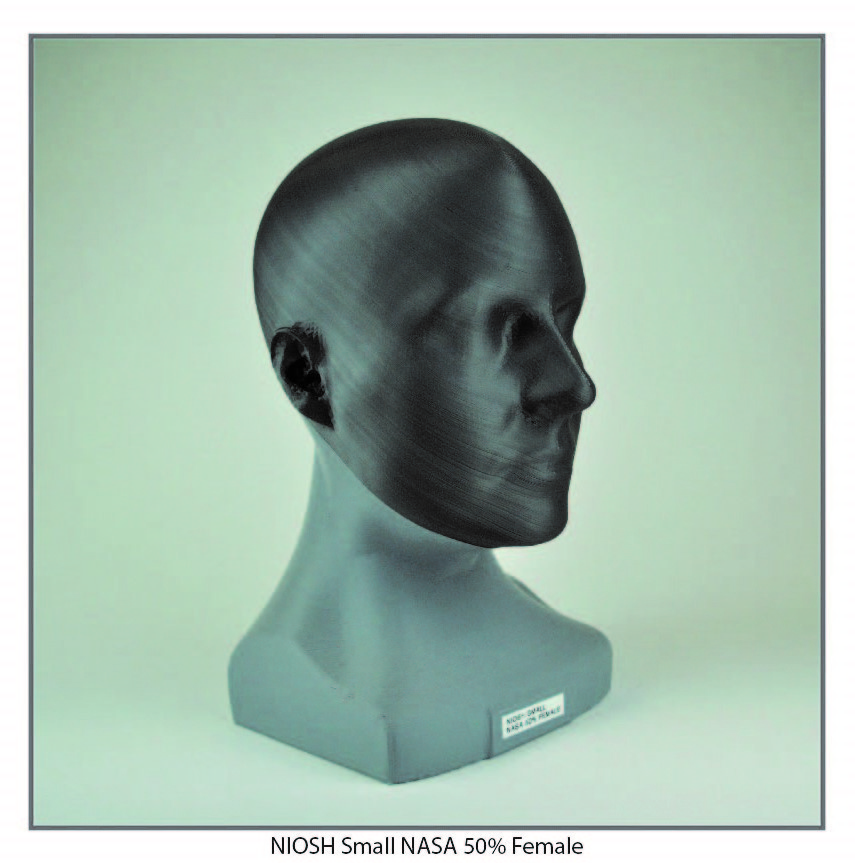
Life Sized Heads (NIOSH small and medium)
thingiverse
<h4>Background:</h4> <p>When Covid-19 hit the United States in March 2020, the country faced extreme personal protective equipment (PPE) shortages. Design that Matters responded by rapidly designing and fabricating face shields for local hospitals. These face shields were designed to have as universal a fit as possible. NASA biometrics for head circumferences were used in the design process to achieve this design specification. The biometrics range from a 5% female head to a 95% male head. In order to demonstrate the universal fit we wanted to produce life-sized heads. These heads are currently used to create a visual for the universal fit capability of the Covid-19 face shield. Continue below to read about our design process!</p> <h4> Design Process:</h4> <p>The National Institute for Occupational Safety and Health (NIOSH) released digital head forms that represent the 5 most common face shapes and sizes. The measurements for the head forms were developed through an anthropometric survey of 3,997 subjects. Using these anthropometric data parameters, five head size categories were developed by the National Personal Protective Technology Laboratory (NPPTL). Three-dimensional scans of five individuals who most closely represented each size category were averaged together to produce the five head shapes: small, medium, large, short/wide, and long/narrow. These digital head forms were released on the NIOSH website.</p> <p>NIOSH Heads: https://www.cdc.gov/niosh/data/datasets/rd-10130-2020-0/default.html</p> <p>We downloaded the digital head forms but decided to make adjustments before fabricating them. A key part of fabricating these heads was ensuring we demonstrated the wide range of NASA biometric head circumferences that the Covid-19 face shield is intended to fit. We measured the circumferences of the five NIOSH heads and found they did not align perfectly with the NASA biometrics. We scaled the heads uniformly to give us a 5% female, a 50% female, a 50% male, and a 95% male. These 4 biometrics provide a good range to demonstrate the product’s capabilities.</p> <p>NASA Biometrics: https://msis.jsc.nasa.gov/sections/section03.htm </p> <p>After scaling the heads to meet NASA biometrics, we worked on the aesthetics. The necks on the original heads were unnaturally long and, without any base, the floating head and neck combination was unsettling. We wanted our visual of the Covid-19 face shield’s capabilities to not distract from the actual face shield design. To do this we designed a base with the intention of it being inconspicuous so it would not distract from the product being displayed. The base was designed in Fusion360 and combined with the original stl files using Meshmixer.</p> <p>Once we were happy with our design we moved to 3D printing. We used both a Lulzbot Taz 6 and a Prusa i3 mk3s. Neither printer had a large enough bed so we split the heads into multiple parts using LuBan. The prints uploaded here are the parts for the NIOSH small head scaled to NASA 50% female and a NIOSH medium head scaled to NASA 50% male.
With this file you will be able to print Life Sized Heads (NIOSH small and medium) with your 3D printer. Click on the button and save the file on your computer to work, edit or customize your design. You can also find more 3D designs for printers on Life Sized Heads (NIOSH small and medium) .
